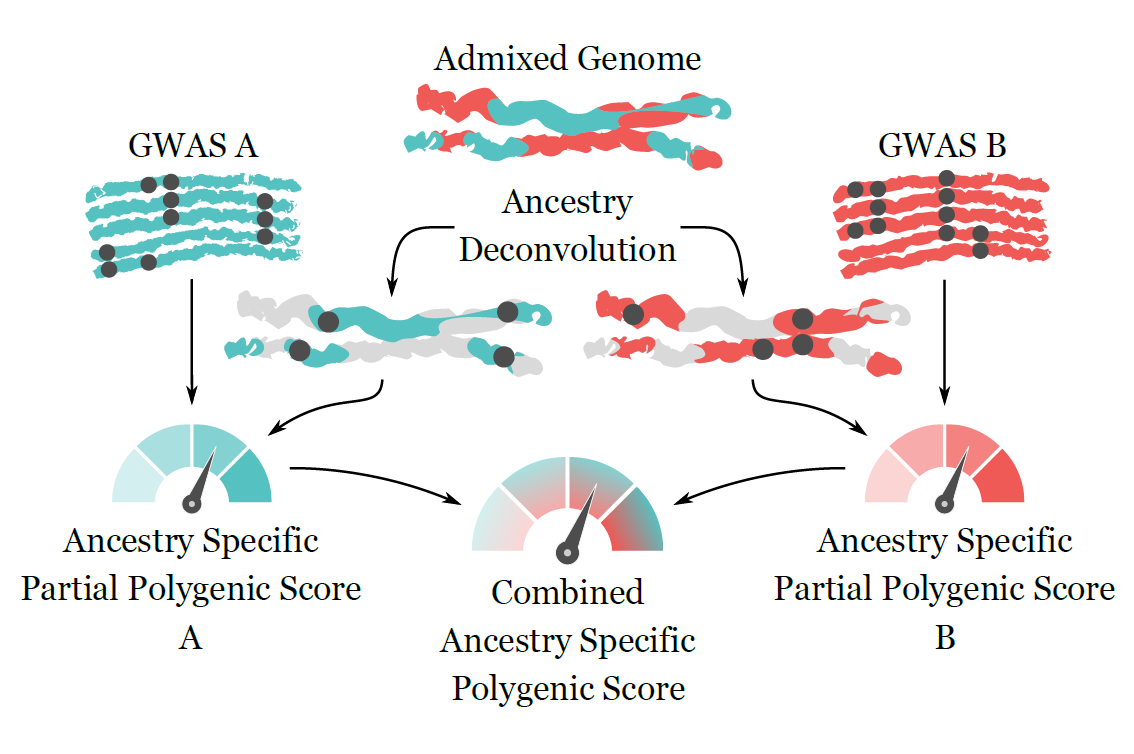A new study in Nature Communications proposes a method to extend the estimate of genetic risk, a cornerstone of the personalized medicine revolution, to individuals from multiethnic groups.
“The information contained in our DNA is a mosaic of genetic instructions inherited from our ancestors, and in many societies one’s ancestors often come from the opposite corners of the world.” says Dr. Davide Marnetto, first author of the study. Multiethnic groups are composed of individuals whose recent ancestors come from populations that are genetically distinct for tens of thousands of years, termed “recently admixed individuals”. A typical example being African-American individuals. It is even possible to determine their ancestral components or, in other words, which parts of their genomes come from one population or the other.
So far the contribution of one’s ancestry, or ancestries, to the total risk of developing a specific disease or presenting a given character has been a long standing question of medical genomics. Nevertheless, most of the data that associate mutations to their effects on complex human traits come from relatively uniform populations, in order to have a simplified and clearer picture. But what can be done when dealing with individuals who derive their ancestry from two or more distantly related populations? “The latest developments of personalized medicine needed an extra step to be applied to individuals with more diverse origins, and here we tried to combine knowledge from uniform populations into a model that could work for recently admixed individuals ” continues Dr. Marnetto.

To separate the various ancestry components of each individual, Marnetto and colleagues applied methods from molecular anthropology and population genomics. “This research is a welcomed example of deep synergy between evolutionary/population genetics framework and medically oriented large scale genomics science, which is one of the focuses of our institute.” says Dr. Mait Metspalu who is heading the institute of Genomics at the University of Tartu.
“Our work provides a solid proof of principle on the feasibility of using population genetic and molecular anthropology to boost the potential of personalized medicine. I hope our work can bring individuals of mixed ancestry one step closer to the benefits of personalized and predictive healthcare” concludes Dr. Luca Pagani, the research coordinator.
The study was led by Dr. Davide Marnetto from the Institute of Genomics of the University of Tartu, Estonia and coordinated by Dr. Luca Pagani from the same institution and from the University of Padova, Italy.
Additional information:
Davide Marnetto (Estonian Biocentre, Institute of Genomics, University of Tartu, Estonia), davide.marnetto@ut.ee, tel: +372 53958881
Luca Pagani (Estonian Biocentre, Institute of Genomics, University of Tartu, Estonia / Department of Biology, University of Padova, Italy), lp.lucapagani@gmail.com, tel: +39 3407862518 (+39 0498276290)
 Back
Back



